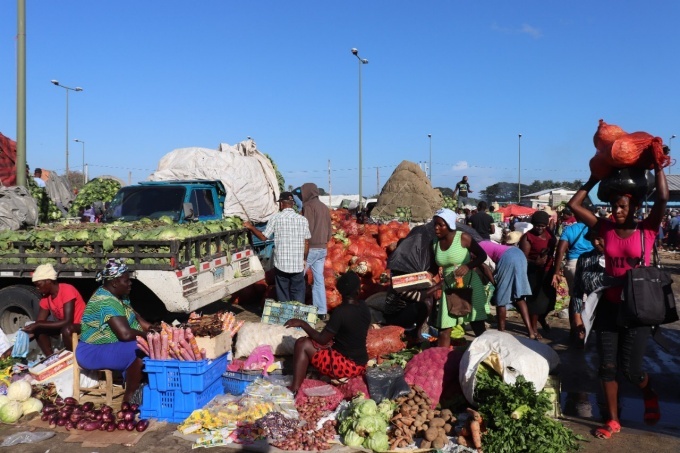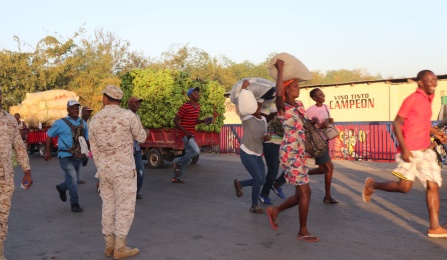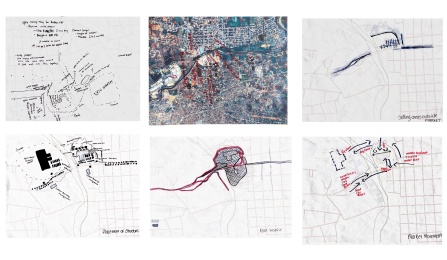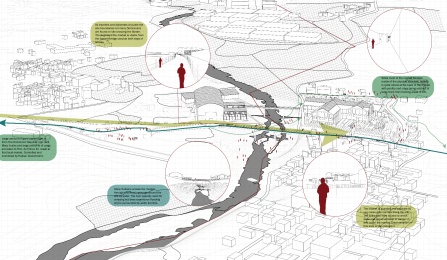The Border and The Market: Exploring the spaces of conflict and exchange in the Dajabón (Haiti) and Ouanaminthe (Dominican Republic) Border Market

Haiti’s economy is highly dependent on agricultural products produced by smallholder farms. These farms have suffered major setbacks with recent natural disasters, extreme weather events, and limited access to technology and government support.
The result? Food insecurity has spiked; in 2017 the price of food increased by more than 22% while agricultural production decreased by 12%. 2.5 million Haitians living in rural areas struggle to feed their families; they make about $1.25 a day. Although the country has extensive opportunities for agricultural production, more than 80% of the Haiti’s food is imported from the Dominican Republic. Haiti has become vulnerable to inflation and price volatility from the international markets they depend on, and local communities are responding with widespread protests.

Vendor carrying goods from Haiti to sell at the Dajabòn market. Credit: Samendy Brice
Samendy Brice traveled to Haiti in January 2020 with support from the Community for Global Health Equity to understand the agricultural trade relationships along the border between Ouanaminthe, Haiti and Dajabon, Dominican Republic. Although the physical border separates the two countries, they informally function as one. Haitians who are reliant on Dominicans for income and food access receive entrance (without visas) to the Dajabon Market every Monday and Friday to sell and buy goods.
In a response to increased trade opportunities, the European Union is constructing a new market with more vendor spaces in Ouanaminthe, Haiti. Although intended to facilitate trade, the markets have produced unexpected boundaries and restrictions; the spaces reproduce inequitable social structures and increase Haitians reliance on Dominicans for their daily needs.

On-site observation drawings looking at foot movement and the influx of people on site. Credit: Samendy Brice
Haitians rely on binational markets for food because there are many barriers to building a sustainable agricultural development program, predicated on the country’s arable lands and natural resources. Existing governance structures and norms have exacerbated financial instability, further depressing Haitians’ economic prospects and isolating the country from international trade and relations.
Can we use the fields of architecture and urban design to meet the needs of local Haitians? Samendy’s thesis explores whether two markets that provide a main source of income and trade relations can help reconstruct Northeast Haiti’s food, education, and agriculture systems to provide long-term growth and stability.

Movement diagram showing the on-site activity of Haitians on site. Credit: Samendy Brice
She highlights one strategy, the Food Business Cluster Plan, which is a collaborative planning process involving multiple levels of government, local and foreign trade institutions, and agricultural businesses. Her proposal seeks to remove unproductive boundaries on the site (for example, walls surrounding the border and market preventing fair access to Haitian locals) while adding supportive assets (fair trade areas and NGO offices) to form an inviting public space that will serve as a center for the region’s transformation.

Student Name:
- Samendy Brice (Architecture)
Faculty Mentors:
- Korydon Smith (Architecture)
- Erkin Ozay (Architecture)
- Emmanuel Frimpong-Boahmah (Urban Planning)
Country of Travel: Haiti
Dates of Travel: Janruary 2020
Written by Jessica Scates